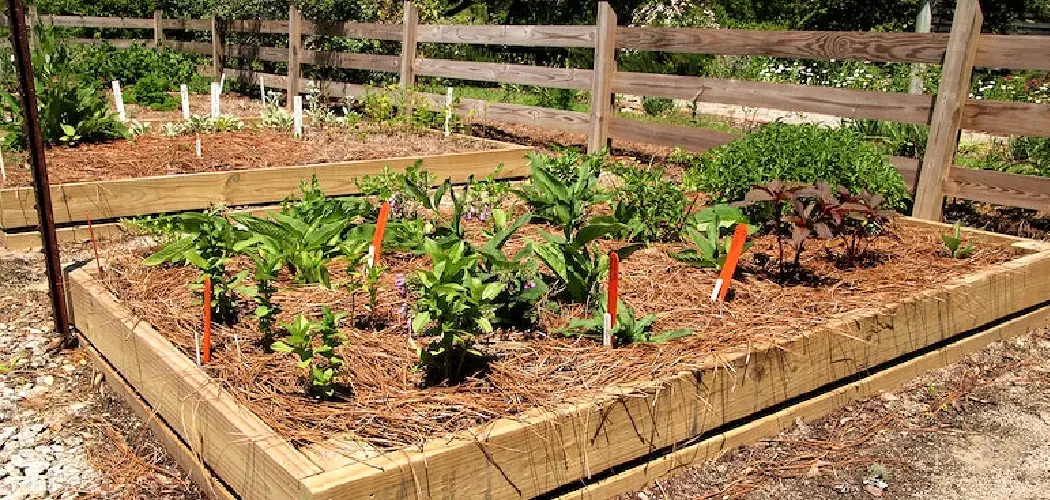If you’ve ever had a garden, you know what it feels like to devote love and resources to growing lush fruits and vegetables.
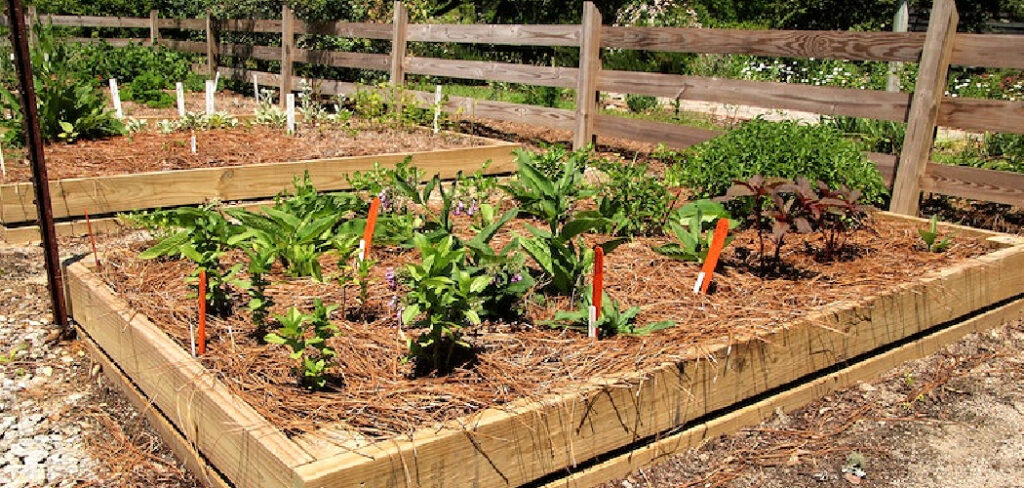
In order for your garden to be successful, however, there is one important ingredient that has to be just right – the soil. While finding quality soil can seem intimidating at first, there are actually lots of options available if you know where to look. On top of that, once you’ve found it (or mixed up your own special blend), knowing how best to store it is key to keeping your soil healthy season after season! So let’s get right down to our top tips on how to store garden soil so it stays fresher longer.
What Can I Do with Old Garden Soil?
If your garden soil is too compacted or full of weeds, it’s time to replace it with fresh new soil. But what should you do with the old garden soil? Fortunately, there are several different ways to repurpose and reuse it.
You can incorporate the old soil into compost piles as a valuable addition of organic material. This helps to improve the aeration and drainage of your compost pile, as well as add valuable nutrients such as nitrogen, phosphorus, and potassium. When adding old soil to a compost pile, it’s important to make sure that weeds have been removed, or they could spread throughout the pile.
Old garden soil can also be used to fill in low spots in gardens or lawns. You can mix it with new soil to create a more uniform foundation, which can provide better support for plants and help them thrive.
Another use for old garden soil is as a top dressing around established plants and trees. This helps keep the moisture in and prevents weeds from taking over.
Finally, old garden soil can be used as a filler for large containers or planters. As long as you mix it with fresh soil and compost to keep the nutrients balanced, your plants won’t suffer from using up old garden soil.
No matter how you decide to use your old garden soil, it’s important to remember that it won’t provide the same nutrient-rich environment as new soil. But with a little creativity and effort, you can find many ways to repurpose and reuse your old garden soil for other projects.

By finding a few creative uses for your old garden soil, you’ll be able to put it to good use and keep it from going to waste. This will help reduce your environmental footprint while improving the health of plants in your garden or landscaping. So the next time you’re getting rid of old garden soil, remember these uses and get creative with your repurposing efforts.
10 Methods How to Store Garden Soil
1. Store in a Cool, Dry Place.
One of the most important things to remember when storing garden soil is to keep it in a cool, dry place. Soil that is too warm or too damp can lead to the growth of mold or other harmful bacteria. A good way to keep your soil cool is to store it in a garage or shed that is not exposed to direct sunlight.
If you don’t have an area like this, make sure to cover the soil with a tarp or plastic sheet during hot weather. However, be sure to keep the soil from becoming too dry as well since it can become difficult to work with.
2. Do Not Store near Chemicals.
Another important thing to remember when storing garden soil is to keep it away from chemicals. Chemicals such as herbicides and pesticides can contaminate your soil and make it unsafe for use in your garden. If you must store your soil near chemicals, be sure to keep it in a sealed container.
This will help keep the soil from absorbing any of the chemicals and ensure that it is safe for your plants. It is also important to regularly inspect your soil for signs of contamination. If you detect any, be sure to dispose of the contaminated soil properly. If you are not sure how to dispose of it, contact your local waste management agency for guidance.
3. Do Not Store for More than One Year.
It is also important to remember that garden soil should not be stored for more than one year. After one year, the nutrients in the soil will begin to break down, and it will no longer be as effective for growing plants.
If you need to store your soil for longer than one year, be sure to add fresh compost or other organic matter to it before using it again. This will help to replenish the nutrients in the soil and ensure that your plants are getting the best possible start. Additionally, you should avoid storing your soil in an airtight container, as this can cause it to become waterlogged and will reduce its effectiveness of the soil.
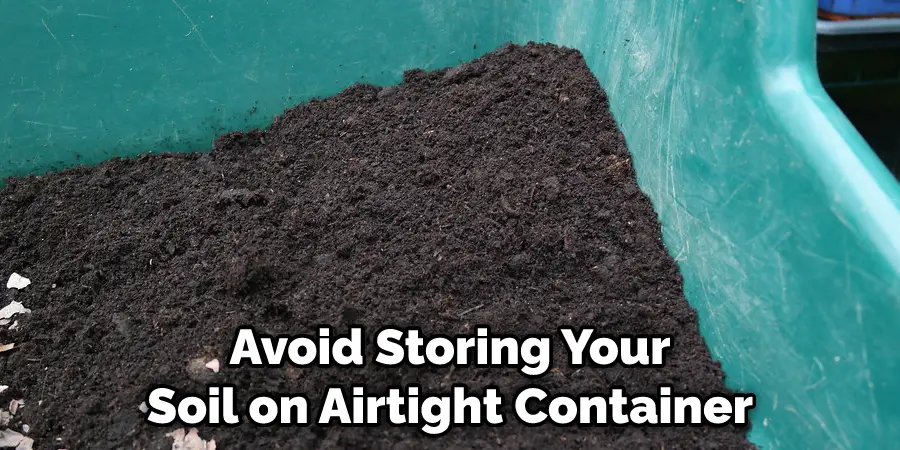
4. Use an Airtight Container.
When storing garden soil, be sure to use an airtight container. This will help to keep the soil from drying out and will also prevent pests from getting into it. A good option for an airtight container is a plastic storage bin with a lid that fits snugly. If you need to store larger quantities of soil, a garbage bag or large plastic tub may also be used.
Be sure to label the container so that you know what is inside. This will help you keep track of how much soil you have and when it needs to be used or replaced. You may also want to include a date on the label so that you know when the soil was stored. This will help ensure that it is still usable and will not need to be discarded.
5. Label the Container with the Date.
Another good idea when storing garden soil is to label the container with the date. This will help you keep track of when the soil was stored and how long it has been since it was last used. This information can be helpful when deciding whether or not to use the soil again. Additionally, labeling your containers will help you distinguish between different types of soil.
For example, if you have a container of garden soil and one of potting soil, labeling them with the date will help you differentiate between the two. This is important as different types of soil may need to be used in different ways. By labeling your containers, you can make sure that you are using the right type of soil for the job at hand.
6. Add Some Sand or Vermiculite for Drainage.
If you are going to be storing your garden soil for an extended period of time, you may want to add some sand or vermiculite to it for drainage purposes. This will help to prevent the soil from becoming too compacted and will also help with aeration. Just be sure to mix the sand or vermiculite thoroughly, as too much can also lead to problems with drainage.

You may also want to consider adding some compost or other organic matter to the soil as well to provide additional nutrients for the plants. However, be sure to check with your local garden center or extension office for recommendations on the type and amount of organic matter to use.
7. Place the Container in a Well-Ventilated Area.
When storing garden soil, make sure to place it in a well-ventilated area. This will help keep the soil from becoming overly moist or dry. It is also important to keep the temperature consistent when storing garden soil, as extreme temperatures can cause mold and other issues with the soil. Additionally, make sure to keep the soil away from direct sunlight, as it can cause the soil to become too hot.
This can lead to an imbalance in the soil’s nutrients, which can negatively impact the health of your plants. If possible, try to store the soil in a cool area where it won’t experience any drastic changes in temperature. Lastly, make sure that the container you use to store the soil is sealed tightly.
This will help ensure that no insects or pests get into your soil while it is in storage. Following these steps can help ensure that your soil stays in optimal condition for a longer period of time.
8. Do not store with fertilizer or other chemicals.
When storing garden soil, it is important to remember not to store it with fertilizer or other chemicals. Fertilizers and chemicals can contaminate the soil, making it unsafe for use in your garden. If you must store your soil near these items, be sure to keep them in a separate, sealed container.
If possible, store your soil in a container or box that is made of non-toxic, food-grade material. This will help ensure that no chemicals will leach into the soil. Additionally, only use soil that is completely free of contaminants and pests. If you are unsure if your soil is safe, check with your local extension office or garden store for assistance.
9. Do Not Store near Food Sources.
When storing garden soil, make sure it is not stored near any food sources such as compost or animal feed. This can attract pests and put your plants at risk for contamination. If you must store your soil near these items, be sure to keep them in a separate, sealed container.
Although it is important to keep your soil away from food sources, it is equally important that you store it in a dry place.
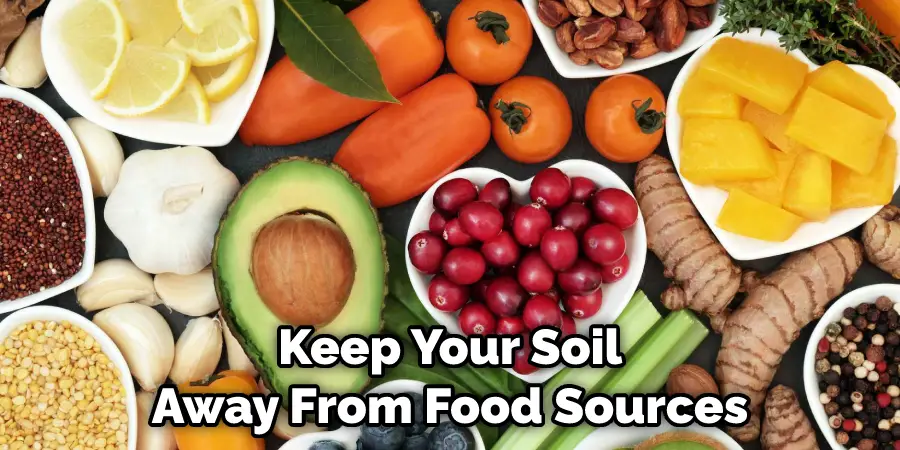
Moisture can cause the soil to deteriorate quickly, which can lead to poor drainage and an unhealthy environment for your plants. Make sure you are monitoring the moisture levels in your soil and that it is being stored away from direct sunlight.
10. Rotate or Add Compost to the Soil Each Year.
Finally, if you are going to be storing garden soil for more than one year, you should rotate or add fresh compost to it every year. This will help keep the nutrients in the soil at optimal levels and ensure that your plants get all the necessary nutrients for healthy growth.
Additionally, this will also help to prevent any harmful bacteria or mold from growing in the soil.
You should also check the soil’s pH levels periodically and adjust accordingly. Storing and taking care of garden soil correctly is essential for growing healthy plants. With the right storage methods and regular maintenance, you can ensure that your garden soil will stay in top condition for many years to come.
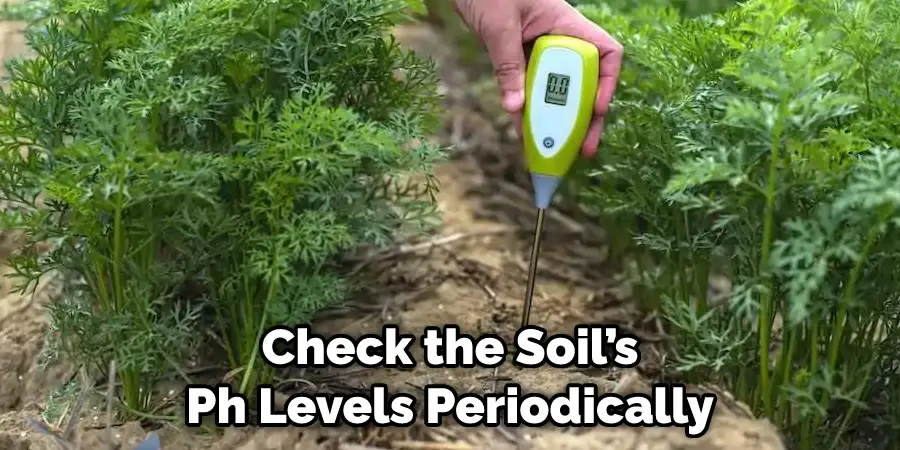
How Can We Conserve and Preserve Soil at Home?
At home, there are several ways we can conserve and preserve soil. One important way is to mulch or cover the ground with vegetable matter such as grass clippings, leaves, and compost. Mulching helps to protect the soil from erosion by wind or rain and also reduces weed growth.
Maintaining a healthy population of earthworms is another great way to preserve soil quality. Earthworms are beneficial because they provide organic matter for the soil, aerate it, and encourage beneficial microbial activity.
To ensure a healthy earthworm population, you can provide them with food scraps and compost, as well as keep the soil moist but not wet.
It is also important to avoid tilling the soil unnecessarily and instead uses mulching and companion planting techniques when planted in the same area. Tilling breaks down existing soil structure, reduces the number of beneficial organisms, and causes compaction.
Finally, using organic fertilizers to supplement the soil’s nutrient level while avoiding chemical ones is essential for preserving soil quality. Chemical fertilizers are often damaging to soil structure and can reduce the population of beneficial microorganisms.
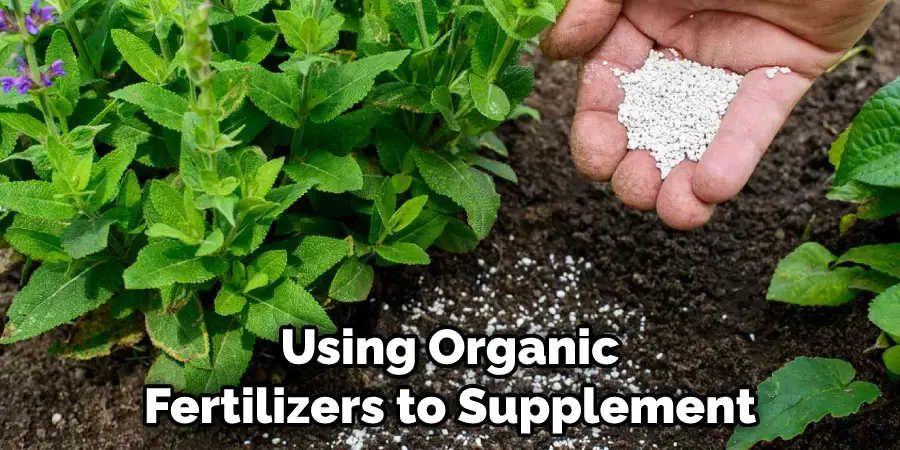
Conclusion
By following the tips above, you can be sure that your garden soil is stored correctly and will remain in good condition until it is time to use it again. We hope this guide on how to store garden soil was helpful. Please share it with your friends on social media if you find it useful. And be sure to check back here soon for more informative guides like this one.
About
Outdoor Fixes is a distinguished figure in the world of Diy design, with a decade of expertise creating innovative and sustainable Diy solutions.
His professional focus lies in merging traditional craftsmanship with modern manufacturing techniques,
fostering designs that are both practical and environmentally conscious. As the author of diy,
outdoorfixes delves into the art and science of outdoorfixes-making, inspiring artisans and industry professionals alike.
Education RMIT University
(Melbourne, Australia) Associate Degree in Design (Outdoor Fixes) Focus on sustainable design, industry-driven projects,
and practical craftsmanship. Gained hands-on experience with traditional and digital manufacturing tools, such as CAD and CNC software.
Nottingham Trent University
(United Kingdom) Bachelor’s in outdoorfixes.com and Product Design (Honors) Specialized in product design with a focus on blending creativity with production
techniques. Participated in industry projects, working with companies like John Lewis and Vitsoe to gain real-world insights.
Publications and Impact
In diy, Outdoor Fixes his insights on indoor design processes, materials, and strategies for efficient production.
His writing bridges the gap between artisan knowledge and modern industry needs, making it a must-read for both budding designers and seasoned professionals.

